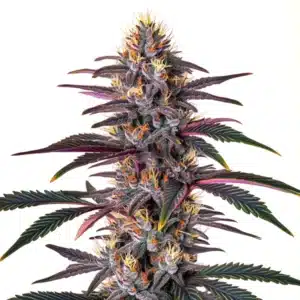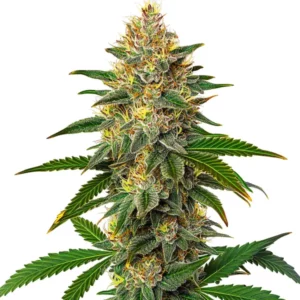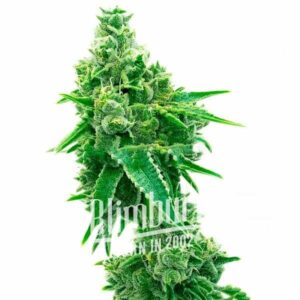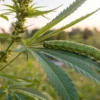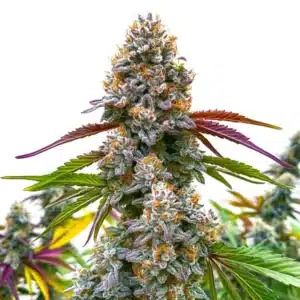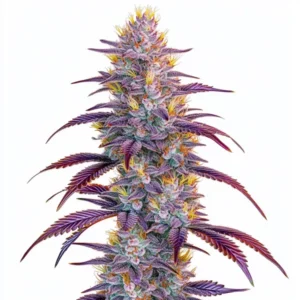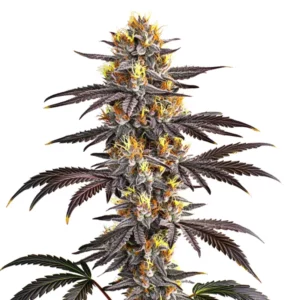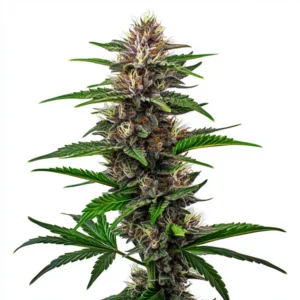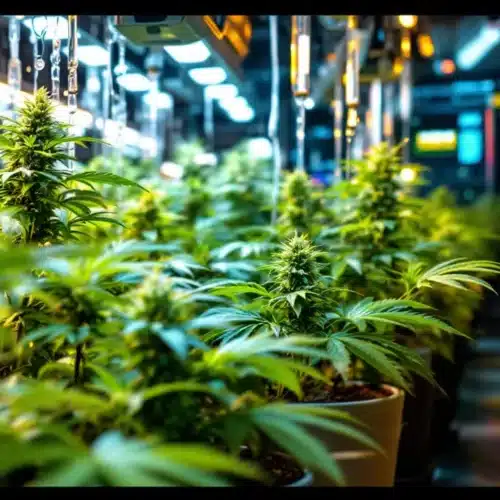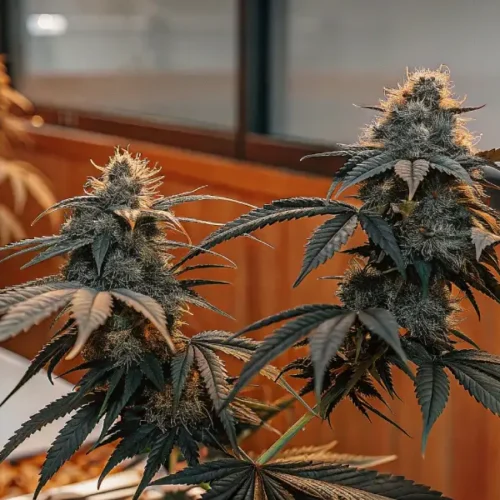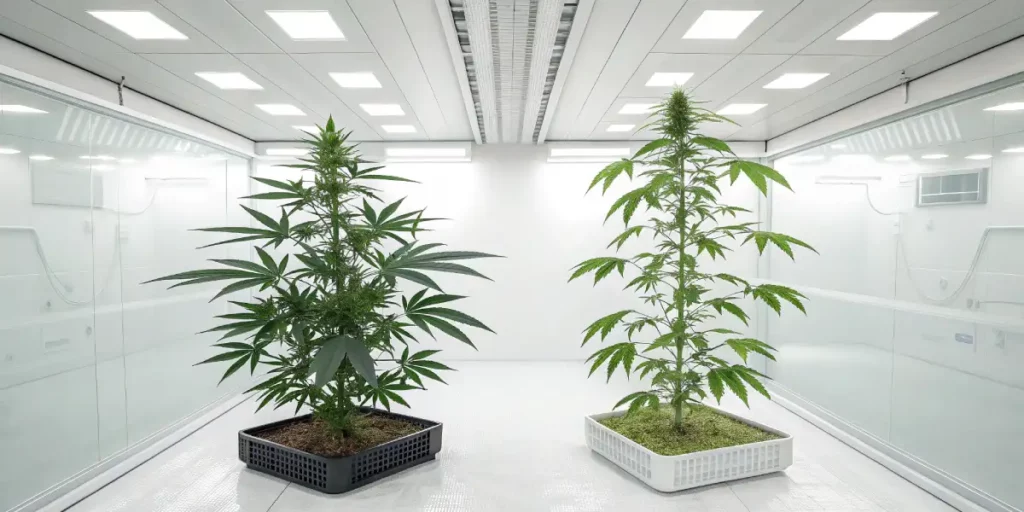
Gibberellin-Induced Changes in Cannabis Morphology
If you’ve been in the cannabis growing industry for a while, you’re probably familiar with the term ‘Gibberellin.’ If you’re new, don’t worry, we’ll break it down for you. Gibberellin is a plant hormone that plays essential roles in the growth and development of plants, including cannabis. Now, let’s delve into the Gibberellin-Induced Changes in Cannabis Morphology and how they impact the overall plant structure.
Gibberellin impacts several aspects of cannabis growth, including stem elongation, germination, dormancy, flowering, sex expression, enzyme induction, and leaf and fruit senescence. The hormone helps the cannabis plant to grow taller and faster, which can be beneficial in certain growing conditions. However, excessive use of Gibberellin can lead to overly tall and lanky plants with weak stems.
By comprehending the “Effects of Gibberellin on Cannabis Plant Structure”, growers can manipulate the hormone’s levels to achieve desired plant characteristics. For instance, Gibberellin can be used to promote faster germination, enabling you to get your seeds sprouting sooner. This is especially useful when growing cannabis strains that typically have longer germination periods, like the Critical Daddy Purple strain from Blimburn Seeds.
Comprehending Gibberellin-Induced Changes in Marijuana can help cultivators in making informed decisions about the use of this hormone. It allows for better control over the growth process, leading to improved crop yields. An in-depth knowledge of how Gibberellin affects cannabis morphology can be a game-changer for any cannabis grower looking to maximize their plant’s potential.
Impact of Gibberellin on Cannabis Plant Morphology
One of the key impacts of Gibberellin-Induced Changes in Cannabis Morphology is stem elongation. Gibberellin promotes cell division and elongation, resulting in taller plants with more spacing between the nodes. This can be advantageous when growing cannabis indoors, where space might be limited, and you need your plants to grow upwards rather than outwards.
However, care must be taken not to overuse Gibberellin. Excessive use can lead to cannabis plants with weak and thin stems, unable to support the weight of the buds. This can be a particular concern when growing heavy-yielding strains like Wombat from Blimburn Seeds.
Another significant impact of Gibberellin on cannabis plant morphology is its role in flower development. Gibberellin triggers the flowering process by activating the genes responsible for flower development. This can be particularly useful in cannabis cultivation, as it allows growers to control the timing of flowering, leading to improved yield and quality of their crops.
In the context of the “Impact of Gibberellin on Cannabis Plant Morphology”, it is also important to mention its role in leaf and fruit senescence. Gibberellin delays the onset of leaf and fruit senescence, thus extending the productive life of the plant. This can lead to a significant increase in overall yield, making Gibberellin a powerful tool in cannabis cultivation.
Gibberellin Use in Modifying Cannabis Growth: Gibberellin-Induced Changes in Cannabis Morphology
One of the key impacts of Gibberellin-Induced Changes in Cannabis Morphology is stem elongation. Gibberellin promotes cell division and elongation, resulting in taller plants with more spacing between the nodes. This can be advantageous when growing cannabis indoors, where space might be limited, and you need your plants to grow upwards rather than outwards.
By applying a solution of Gibberellin to the seeds before planting, you can kickstart the germination process and get your cannabis plants off to a strong start. This can be especially beneficial when growing strains like the Mamba Negra from Blimburn Seeds, known for its longer germination time.
“Gibberellin Use in Modifying Cannabis Growth” can also be seen in its role in influencing sex expression. By manipulating the hormone’s levels, growers can encourage the development of either male or female plants, depending on their cultivation needs. This is particularly beneficial in cannabis cultivation, where female plants are usually preferred due to their higher cannabinoid content.
Another application of Gibberellin in modifying cannabis growth involves seed dormancy. Gibberellin breaks seed dormancy and encourages germination, which can be particularly useful when dealing with older seeds or hard-to-germinate strains. This allows growers to maximize their seed stock and optimize their cultivation process.
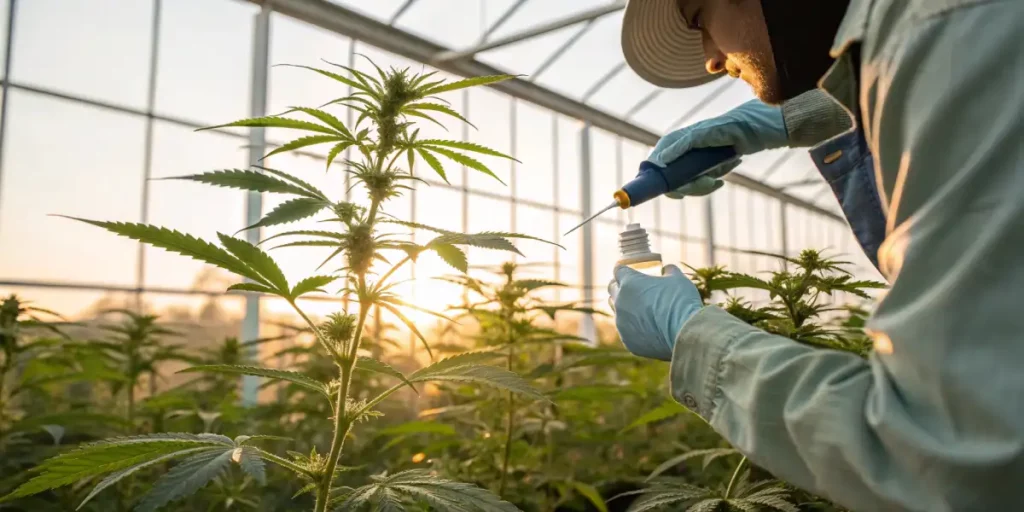
Promos & Deals
Gibberellin and Its Role in Cannabis Morphology Change
Gibberellin plays a significant role in cannabis morphology change. As we’ve seen, it can promote stem elongation, germination, and flowering. However, it can also influence sex expression in cannabis plants. By manipulating Gibberellin levels, growers can influence whether a cannabis plant develops as a male or female.
Higher levels of Gibberellin tend to promote male characteristics, while lower levels promote female characteristics. This can be useful in cannabis cultivation, where female plants are often preferred for their higher cannabinoid content. However, care must be taken when manipulating Gibberellin levels, as it can also lead to hermaphrodite plants if not properly managed.
Apart from influencing the ‘Gibberellin-Induced Changes in Cannabis Morphology’, this hormone also plays a role in the plant’s response to environmental conditions. It has been found that Gibberellin production in cannabis plants increases in response to longer daylight hours, thus aligning cannabis growth with the seasons and ensuring optimal development.
Furthermore, “Gibberellin and Its Role in Cannabis Morphology Change” cannot be discussed without mentioning its impact on the plant’s overall health and vitality. Gibberellin enhances the plant’s resistance to stressors such as disease and adverse weather conditions, thereby improving its chances of survival and productivity.
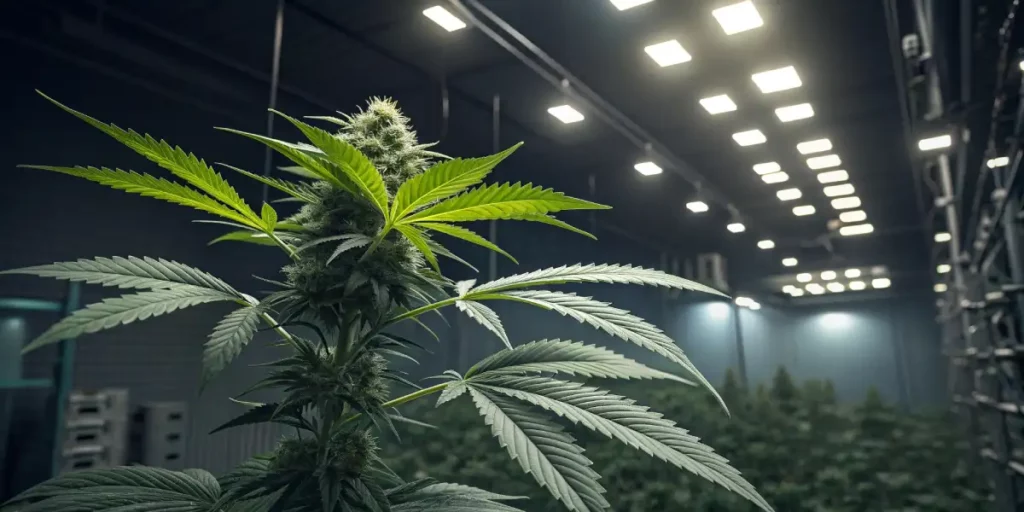
Frequently Asked Questions
How does Gibberellin-Induced Changes in Cannabis Morphology affect cannabis plant structure?
Gibberellin affects the cannabis plant structure by promoting cell division and elongation, leading to taller plants with more spacing between the nodes. This can be beneficial in certain growing conditions, such as when space is limited, and you need your plants to grow upwards rather than outwards.
However, excessive use of Gibberellin can lead to overly tall and lanky plants with weak stems. Therefore, it’s essential to use Gibberellin judiciously and monitor your plants closely to ensure they’re developing as desired.
Furthermore, it’s important to note that Gibberellin-Induced Changes in Cannabis Morphology also affect the leaf structure of the cannabis plant. It promotes larger, more expansive leaves, which can enhance the plant’s photosynthetic capability and contribute to overall growth and productivity. However, just like with stem elongation, care must be taken not to overuse Gibberellin, as it can lead to overly large leaves that shade lower parts of the plant, thereby reducing overall productivity.
The “Effects of Gibberellin on Cannabis Plant Structure” also extend to root development. Gibberellin promotes robust root growth, which is critical for the uptake of nutrients and water. A well-developed root system can enhance the plant’s resilience to stressors and contribute to overall productivity.
Can Gibberellin be used to modify cannabis growth?
Yes, Gibberellin can be used to modify cannabis growth. It can be used to break seed dormancy and promote germination, speeding up the start of your cannabis cultivation journey. It can also be used to promote flowering, encouraging your cannabis plants to transition to the flowering stage sooner.
However, care must be taken when using Gibberellin to modify cannabis growth. Overuse can lead to overly tall plants with weak stems, so it’s important to use Gibberellin judiciously and monitor your plants closely.
Gibberellin can also be used to modify cannabis growth by influencing the timing of flower development. By carefully managing Gibberellin application, growers can control when their plants transition from the vegetative to the flowering stage, thus optimizing their cultivation schedule and maximizing yield.
Lastly, Gibberellin can modify cannabis growth by influencing the plant’s response to environmental conditions. By comprehending the plant’s Gibberellin response, growers can better align their cultivation practices with the plant’s natural growth patterns, thus enhancing productivity and efficiency.
Does Gibberellin influence sex expression in cannabis plants?
Yes, Gibberellin can influence sex expression in cannabis plants. Higher levels of Gibberellin tend to promote male characteristics, while lower levels promote female characteristics. This can be useful in cannabis cultivation, where female plants are often preferred for their higher cannabinoid content.
However, care must be taken when manipulating Gibberellin levels to influence sex expression. If not properly managed, it can lead to the development of hermaphrodite plants, which can be detrimental to your cannabis cultivation efforts.
Lastly, Gibberellin can modify cannabis growth by influencing the plant’s response to environmental conditions. By recognizing the plant’s Gibberellin response, growers can better align their cultivation practices with the plant’s natural growth patterns, thus enhancing productivity and efficiency.
It’s also important to note that while Gibberellin can influence sex expression, it is not the only factor at play. Environmental conditions, particularly light and temperature, also play significant roles in determining the sex of cannabis plants. Therefore, using Gibberellin to influence sex expression should always be done in conjunction with proper environmental management.
What are the risks of using Gibberellin in cannabis cultivation?
While Gibberellin can be beneficial in cannabis cultivation, there are also risks associated with its use. Overuse can lead to overly tall and lanky plants with weak stems, unable to support the weight of the buds. This can be particularly problematic when growing heavy-yielding strains.
Furthermore, manipulating Gibberellin levels to influence sex expression can lead to the development of hermaphrodite plants if not properly managed. Therefore, it’s important to use Gibberellin judiciously and monitor your plants closely to ensure they’re developing as desired.
Another risk associated with the use of Gibberellin in cannabis cultivation is the potential for the hormone to cause unwanted side effects in the plants. For instance, excessive use of Gibberellin can lead to leaf yellowing, a condition known as chlorosis, which can significantly reduce the plant’s photosynthetic capability and thereby impact overall productivity.
Lastly, while Gibberellin can be a powerful tool in cannabis cultivation, it should not be seen as a substitute for good cultivation practices. Proper watering, nutrient management, and pest control are still vital for successful cannabis cultivation. Gibberellin should be seen as a tool to enhance these practices, not replace them.

